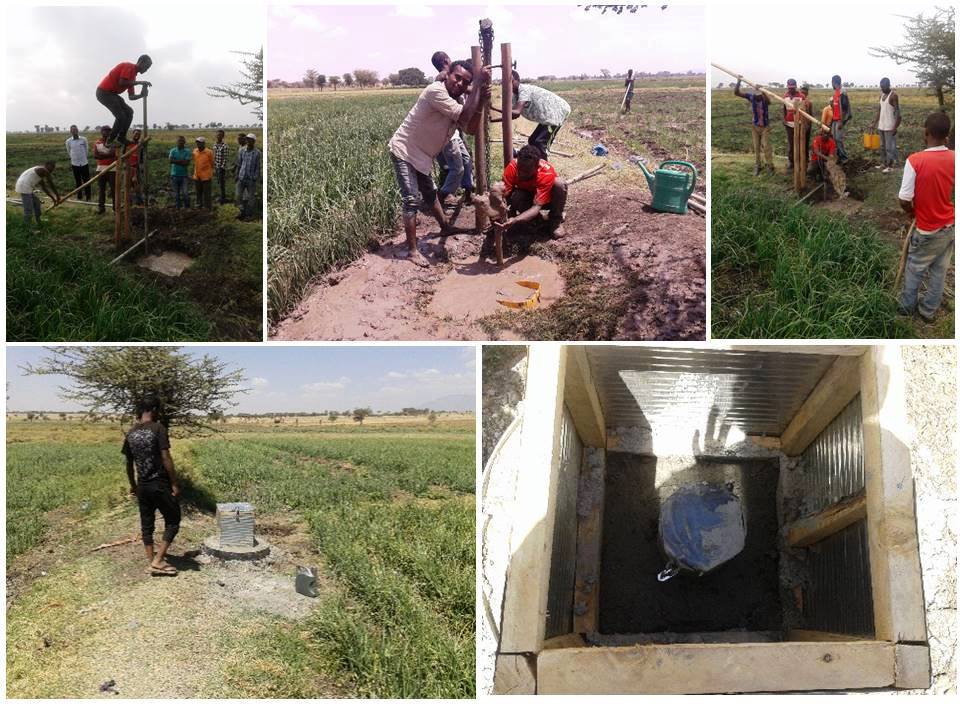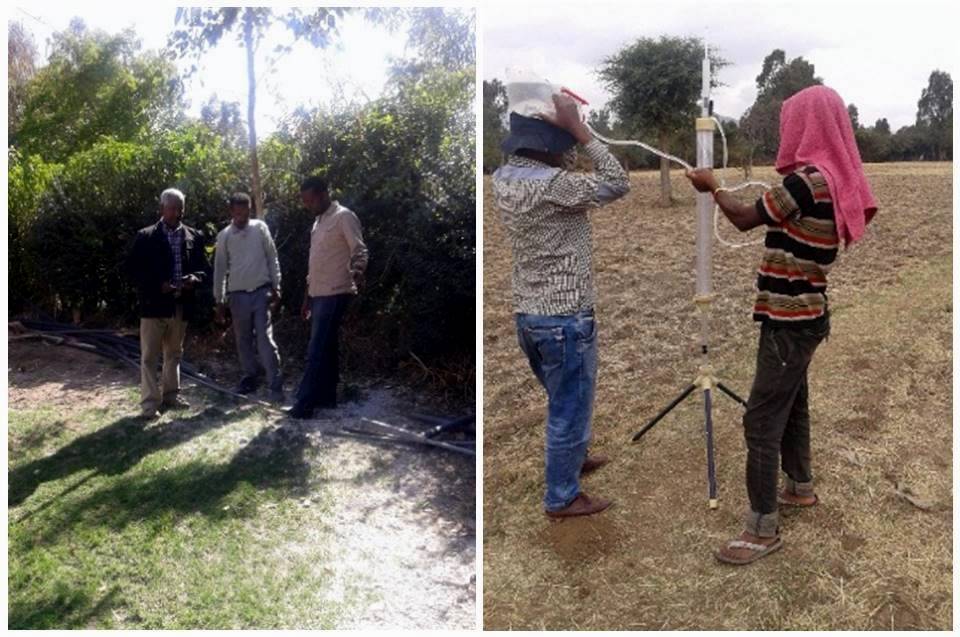In March 2017, piezometer construction began in the Koka Plain, the lowland GroFutures Observatory site in the Upper Awash Basin. A piezometer array comprising a transect of 3 shallow (~20 m depth) piezometers has been completed using traditional, manual drilling techniques. Completed piezometers have been installed with a 4-inch casing and feature screen lengths of 9 to 10 m at depths of ~10 m below ground. Lithological samples have been collected at every observed change in lithology during drilling. Each monitoring piezometer is “double capped” in an effort to inhibit tampering or vandalism.

Construction of piezometers in the Koka Plain of the lowland GroFutures Observatory site in the Upper Awash Basin using traditional, manual drilling techniques (top); monitoring piezometers are “double capped” for extra security (bottom)
Work is expected to start shortly on the construction of piezometers in the Becho Plain, the upland GroFutures Observatory site in the Upper Awash Basin, before the seasonal rains in May/June prevent field construction. Five drilling sites have been identified in an effort to monitor effects of pumping as well as seasonal rainfall and river discharge.
Field experiments in the Koka and Becho Plains of the Upper Awash Basin have also taken place and comprise soil infiltration tests using a Guelph Permeameter. More than 20 experiments have been conducted and the measurements will be used to help understand hydrological responses in these environments to rainfall and specifically the generation of groundwater recharge. In addition, approximately 20 samples have been collected from the shallow wells in the Koka and Becho Plains and analysed for basic physicochemical tests and stable isotope ratios of Oxygen and Hydrogen.

Monitoring site selection in the Becho Plain with local experts (left); soil infiltration tests using Guelph Permeameter in the Upper Awash Basin (right)